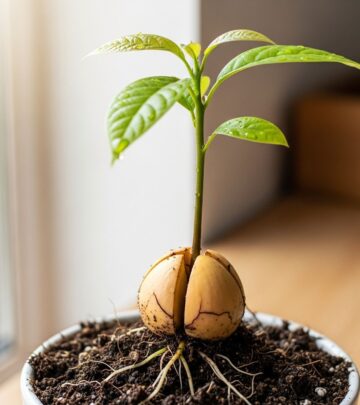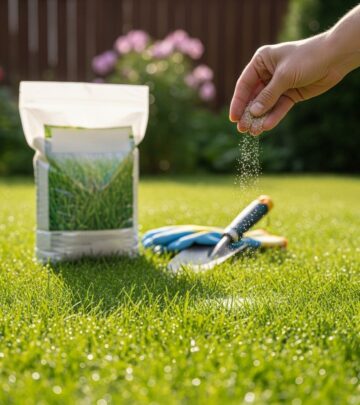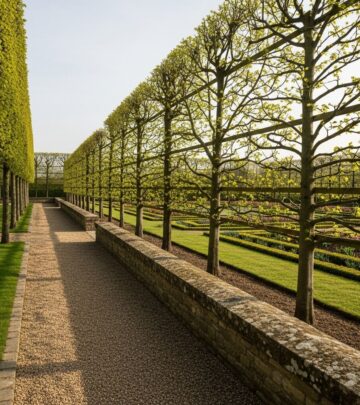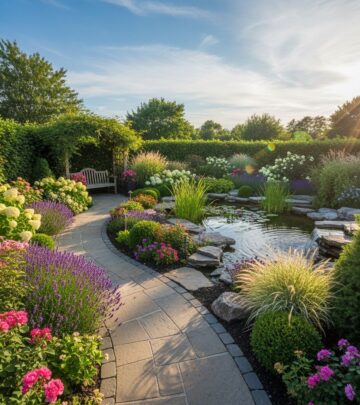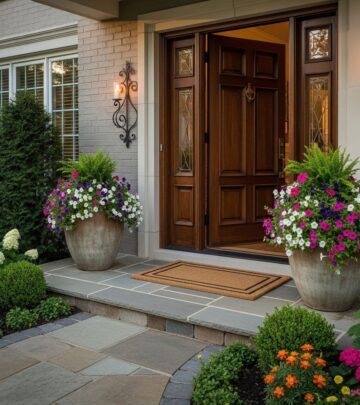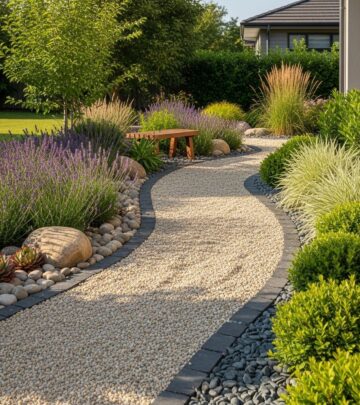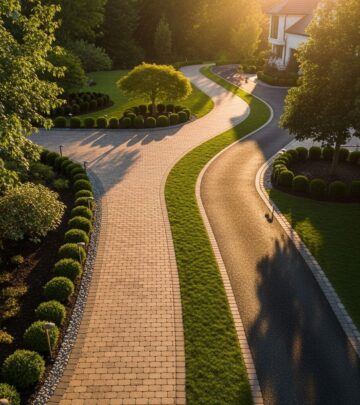Best Birch Trees For Landscaping: 5 Essential Species
Discover five stunning birch tree varieties to enhance your landscape with graceful forms, distinctive bark, and year-round interest.
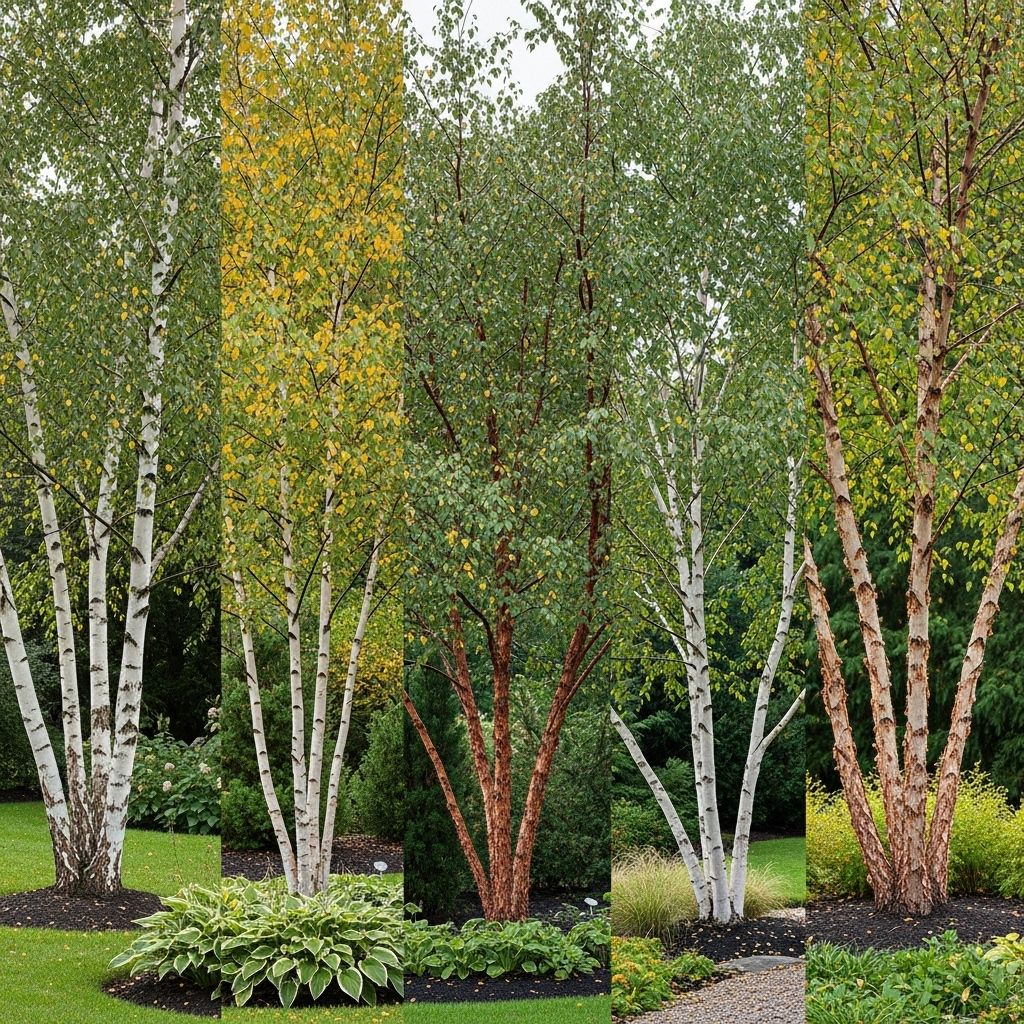
Image: HearthJunction Design Team
Birch Trees: Five Top Choices for Modern Landscapes
With their luminous bark, elegant form, and graceful foliage, birch trees (Betula) have captivated gardeners and designers for centuries. Whether you’re looking to add vertical interest, dappled shade, or textural contrast, these fast-growing deciduous trees offer a remarkable range of choices for diverse settings. This guide highlights five outstanding birch species, details their unique landscape uses, growing requirements, and shares essential tips for successful cultivation.
Why Birch Trees Belong in the Landscape
Birch trees stand out for their ornamental bark, airy canopies, and adaptability to various garden styles. Valued by designers and homeowners alike, their trunks—sometimes multiple, sometimes single—are often set apart by distinctive white, silver, or cinnamon hues. Birch’s quick growth makes it ideal for establishing shade and structure in a new landscape, while the dappled light filtering through its leaves creates a welcoming ambience beneath. Their deciduous nature ensures season-long interest, from fresh green foliage in spring to golden autumn displays and striking winter silhouettes.
- Decorative Bark: White, silver, or peeling bark adds winter beauty.
- Fast Growth: Reaches full height in two decades for quick landscape impact.
- Dappled Light: Open canopy provides gentle shade ideal for underplantings.
- Wildlife Value: Birch attracts birds and supports diverse garden ecosystems.
Choosing the Right Birch Tree for Your Landscape
With more than 60 species and numerous cultivars, birches can be selected for a variety of climates and conditions. Consider mature size, bark color, growth habit, and site requirements such as sun exposure and soil moisture. Below is a detailed examination of five birch favorites used in landscaping, along with comparisons to guide your selection.
| Species | Bark Color | Height | USDA Zones | Best Landscape Use |
|---|---|---|---|---|
| River Birch (B. nigra) | Cinnamon-peeling | 40–70 ft | 4–9 | Focal point, wet areas |
| Gray Birch (B. populifolia) | Chalky white | 20–40 ft | 3–8 | Naturalized, clusters |
| Himalayan Birch (B. utilis) | Shining white | 40–50 ft | 4–7 | Parks, open sites |
| Paper Birch (B. papyrifera) | Snowy white, peeling | 50–70 ft | 2–7 | Woodland, shade gardens |
| Silver Birch (B. pendula) | Silvery-white | 40–70 ft | 2–9 | Specimen, groupings |
1. River Birch (Betula nigra)
Landscape Impact: River birch is a favorite for its striking, exfoliating bark—cinnamon, salmon, and buff tones that curl and peel for dramatic winter interest. With a fast growth rate, it can reach up to 40–70 feet tall and forms a broad canopy up to 35 feet wide within two decades. Its open shape and textured trunk make it a memorable focal point in large gardens or parks.
- Hardiness: USDA Zones 4–9; one of the most adaptable birches.
- Soil and Site: Thrives in moist, acidic soils but tolerates drier conditions better than most birches. Prefers full sun to light shade.
- Design Uses: Excellent beside ponds or streams, or where a bold statement tree is required.
- Lifespan: Typically lives up to 50 years—short-lived compared to oaks, but fast to mature.
Is River Birch Right for You?
Choose river birch if you want a specimen tree with dramatic bark and the ability to handle both wet and moderately dry soils. Its wide canopy makes it best suited for large lawns or park settings, not confined city gardens. Plant with plenty of space to avoid crowding its roots and branches.
2. Gray Birch (Betula populifolia)
Landscape Impact: The gray birch’s chalk-white bark and slender, multiple-stem form make it look more like an oversized shrub than a tree. It’s often found in clusters, which can create a natural woodland effect or soft screen when grouped together. Its leaves are triangular, fluttering in the breeze to cast light, shifting shade.
- Hardiness: USDA Zones 3–8; native to North America.
- Soil and Site: Prefers moist to swampy soils, but will establish in poor, sandy ground. Ideal for naturalizing or quick cover in open landscapes.
- Design Uses: Great for creating thickets, habitat gardens, or informal borders. Pairs well with woodland understory plants.
- Lifespan: Shorter-lived but fast to establish and effective in mass plantings.
Why Plant Gray Birch?
Gray birch is perfect for tough spots or naturalized plantings where ornamental value and wildlife appeal are desired. Its multi-stem habit stands out in informal or wild gardens, especially when set against dark evergreens or summer-savvy perennials.
3. Himalayan Birch (Betula utilis)
Landscape Impact: Renowned for its dazzling, snow-white bark and stately presence, Himalayan birch is often chosen for large home sites, parks, or open landscapes. Its trunk is exceptionally smooth and white, making it a striking specimen in winter, especially against conifers or dark walls.
- Hardiness: USDA Zones 4–7. Tolerates cold but needs adequate space for best effect.
- Soil and Site: Prefers moist, fertile soils and full sun. Will fill in low-lying, wet sites that challenge other tree species.
- Design Uses: Plant as a stand-alone showpiece or in broad sweeps in landscapes that can showcase its 20-foot canopy.
- Lifespan: Fast-growing; fills empty spaces efficiently but requires maintenance to highlight bark and prevent overcrowding.
Is Himalayan Birch for You?
Choose Himalayan birch for its exceptional bark, rapid coverage, and suitability in open, moisture-rich landscapes. Avoid in small gardens due to its size and light needs. Prune lower branches to best display its ornamental trunk.
4. Paper Birch (Betula papyrifera)
Landscape Impact: Few trees rival paper birch for luminous, peeling white bark that stands in bold contrast to autumn foliage and evergreen backdrops. Native to northern North America, it’s an icon of woodland gardens, lakeshores, and forest edges.
- Hardiness: USDA Zones 2–7; very cold-hardy.
- Soil and Site: Best in cool, moist, well-drained soils. Avoid hot, dry locations which can stress the tree and attract pests.
- Design Uses: Suited for shaded or partly sunny woodland gardens. Beautiful as a single trunk or multi-stemmed for natural groves.
- Lifespan: Moderate; will often succumb to borers if sited in hot, exposed settings.
Is Paper Birch a Good Fit?
Opt for paper birch if you love classic, snowy-white bark and your garden is in a northern or cooler region. Pair with ferns, hostas, and other understory plants for a lush, layered effect.
5. Silver Birch (Betula pendula)
Landscape Impact: Also known as European white birch, silver birch’s elegant weeping branches and fine, silvery bark make it a prized ornamental for specimens and groupings. Its light, open canopy offers dappled shade and its triangular, double-toothed leaves shimmer in the breeze.
- Hardiness: USDA Zones 2–9; highly adaptable.
- Soil and Site: Prefers moist, well-drained soil; avoid dry, compacted areas for best results.
- Design Uses: Beautiful as a focal point, in avenues, or planted in loose clusters for woodland effect.
- Lifespan: Relatively short-lived but highly effective as a fast-impact landscape tree.
When to Choose Silver Birch
Silver birch is ideal for gardens seeking year-round beauty, soft movement, and a classic European look. Plant where its graceful habit and bark will be appreciated from all vantage points.
Birch Trees in Design: Tips for Placing and Pairing
- Group birches in odd-numbered clusters for natural effect—three or five together mimic their wild habit.
- Site in full sun or light dappled shade; protect from harsh, reflective heat to avoid borer infestations.
- Combine with ornamental grasses, ferns, or spring-flowering bulbs beneath to enhance their delicate canopy.
- Mix single and multi-trunked forms for varied texture and silhouette.
Planting and Growing Guide for Birch Trees
Birches are opportunists, thriving in spots where moisture and sunlight are in balance. Follow these essential tips for best results:
- Choose a site with moist, well-drained soil and shelter from the hottest afternoon sun, especially in warm climates.
- Water deeply during establishment, then maintain consistent moisture—mulching helps conserve soil temperature and moisture.
- Prune in late summer or autumn to prevent sap bleeding; remove lower limbs to reveal bark but avoid heavy cuts.
- Monitor for pests, especially the bronze birch borer; keep trees healthy and stress-free to prevent attack.
- Fertilize lightly in spring if growth appears sluggish, but avoid overfeeding which can increase disease risk.
Frequently Asked Questions (FAQs)
Q: How fast do birch trees grow?
A: Most birch trees are fast growers, achieving up to 40 feet in 20 years, making them one of the quickest ways to bring maturity to a new landscape.
Q: Are birch trees prone to pests?
A: Yes, the bronze birch borer is a common threat, especially in stressed trees. Proper site selection and care greatly reduce risk.
Q: Can birch trees tolerate wet soil?
A: River birch and Himalayan birch are especially suitable for moist or even swampy sites, while others prefer well-drained but never dry soils.
Q: How should I plant birch trees for best visual effect?
A: Clusters of three or more, or multi-trunk forms, create the most striking and natural appearance. Pair with shade-loving underplants for layered beauty.
Q: How long do birch trees live?
A: Most birches live 40 to 100 years, which is relatively short for trees but compensated by their rapid growth and landscape appeal.
Conclusion: Birch Trees—A Living Canvas for Every Landscape
From snowy-white bark to shimmering leaves and stately forms, birches offer dynamic beauty for gardens large and small. By selecting the right species and providing optimal care, you’ll enjoy years of graceful charm—whether in a naturalized thicket, a lakeside grove, or as a luminous specimen anchoring your landscape design.
References
- https://www.gardenista.com/posts/birch-trees-5-favorites-to-plant-in-a-landscape-betula-growing-guide/
- https://www.gardenista.com/posts/gardening-101-birch-tree/
- https://www.gardenista.com/garden-design-101/trees/birch-tree-betula/
- https://www.gardenista.com/web-stories/birch-trees-5-favorites-to-plant-in-a-landscape-gardenista-zvbmz/
- https://www.houzz.com/discussions/1730795/picking-a-birch-tree
Read full bio of Srija Burman





